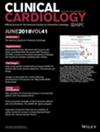The Role of Esaxerenone in the Continuum of Heart Failure With Preserved Ejection Fraction: Insights From a Prospective Observational Study
Abstract
Background
Heart failure with preserved ejection fraction (HFpEF) presents significant therapeutic challenges, particularly exacerbated by comorbidities such as hypertension and diabetes. The modulation of the Renin–Angiotensin–Aldosterone System is critical in managing HFpEF progression. Esaxerenone (ESAX), a selective mineralocorticoid receptor antagonist, may offer benefits in managing HFpEF continuum due to its unique mechanism.
Methods
Conducted at Odawara Municipal Hospital, this single-center, prospective, observational study involved hypertensive adult outpatients diagnosed with either type 2 diabetes mellitus or chronic kidney disease. Patients were categorized into HFpEF and pre-HFpEF groups based on established criteria. The study primarily assessed changes in blood pressure and cardiac function (through NT-proBNP levels and echocardiography), along with secondary outcomes including aortic stiffness and oxidative stress over a 24-week period.
Results
Both HFpEF and pre-HFpEF patients exhibited significant reductions in blood pressure, with no significant differences between the patients. HFpEF patients experienced decreases in NT-proBNP levels and oxidative stress similar to those in pre-HFpEF patients. Notably, pre-HFpEF patients demonstrated more pronounced improvements in cardiac function, particularly in the E/e' ratio and global longitudinal strain, compared to HFpEF patients. Additionally, 30% of pre-HFpEF patients had improved to stage A, suggesting potential for early intervention.
Conclusions
ESAX appears to be effective in managing the heart failure continuum, particularly benefiting pre-HFpEF patients. Its impacts suggest the potential benefits of early intervention in decelerating disease progression and potentially preventing the new onset of HFpEF, highlighting the importance of targeted therapies at early stages of heart failure.


 求助内容:
求助内容: 应助结果提醒方式:
应助结果提醒方式:


